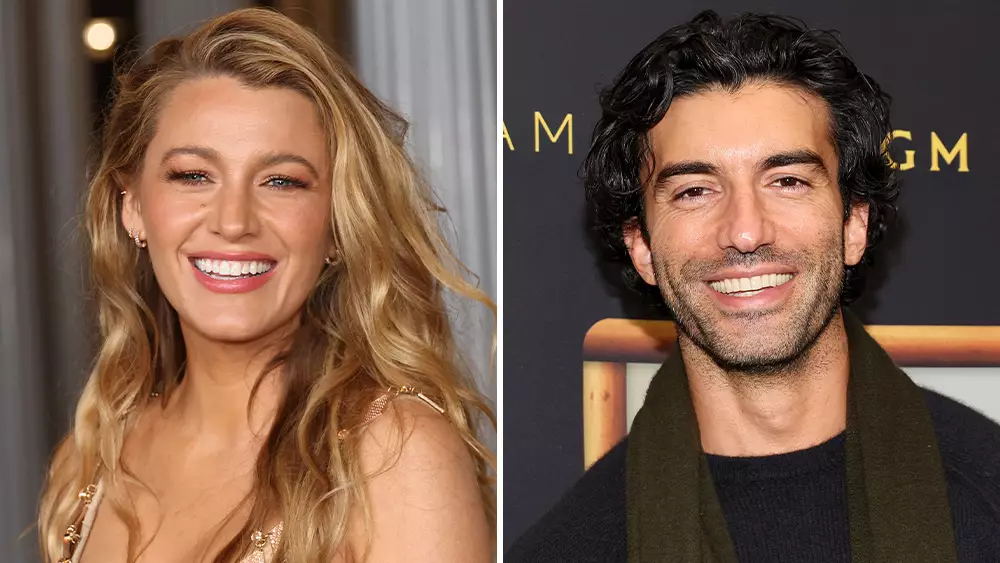As the glittering world of Hollywood often intertwines glamour with turmoil, the recent legal battle between actress Blake Lively and her co-star and director Justin Baldoni has ignited fierce debates on workplace ethics, sexual harassment, and public retribution in the entertainment industry. The conflict escalated dramatically over the New Year’s festivities as Lively filed a lawsuit against Baldoni and his team, which brings to light not just personal grievances but systemic issues entrenched in Hollywood’s troubling culture.
The genesis of this controversy traces back to the production of “It Ends With Us,” a film adaptation of Colleen Hoover’s acclaimed novel. Eleven days after Lively’s initial complaint to California’s Civil Rights Department, she took a bold step to elevate her claims to federal court in New York. Lively’s legal documents outline a narrative that alleges not merely harassment but an extensive and “coordinated retaliatory scheme” specifically designed to silence her and other voices within the production crew who might advocate for a safer and more respectful work environment.
Lively’s claims are multifaceted—she portrays the alleged actions of Baldoni and his associates as not only a breach of contract but also as violations of both state and federal laws. This legal action is seen as an attempt to shine a spotlight on the pervasive issues women, and industry professionals, endure when challenging the status quo in an environment often characterized by power imbalances.
What stands out in Lively’s case is the sheer number of allegations being leveled against Baldoni and his team—thirteen claims in total, framing the narrative of retaliation as intentional and malicious. According to the suit, the campaign aimed to discredit Lively, thereby reinforcing the damaging culture that often silences individuals trying to speak out against harassment. Her legal team is pushing for unspecified damages while emphasizing the emotional and professional toll this situation has taken on Lively.
In a notable counterattack, Baldoni filed his own lawsuit against the New York Times, alleging that the media outlet’s reporting was misleading and lacked crucial context. This move reflects a common tactic used by those accused of misconduct in Hollywood, as they often seek to reshape the narrative in their favor, complicating the overall legal landscape.
This legal clash is emblematic of a larger discourse about how Hollywood handles allegations of misconduct. The fallout from this case could ripple through the industry, potentially influencing other victims to come forward with their experiences or, conversely, sparking fear among prospective whistleblowers about the repercussions they may face. The current climate in entertainment is one of heightened awareness towards harassment, but incidents like this reveal the persistent challenges linked to accountability.
Additionally, the trial could serve to shed light on the insidious nature of public relations tactics employed by production companies. Given Baldoni’s PR team’s admission of having combative strategies ready, there’s an urgent need for a re-evaluation of how reputational damage control is handled—especially when the stakes involve the careers and well-being of the individuals involved.
Media coverage has played an integral role in this unfolding drama, with the New York Times article provoking strong reactions from both Lively and Baldoni. This incident epitomizes the delicate balancing act between personal narratives and public scrutiny. The effectiveness of media in shaping public opinion cannot be overstated; journalists, while aiming to report factually, must grapple with the implications of a story on the individuals involved.
As tensions mount, how the media frames this legal battle will influence not only public perception of Lively and Baldoni but also how viewers engage with the film industry as a whole. The audience often holds a vested interest in unfolding human drama, and the nuanced nature of who they choose to support may shift depending on how the story is told.
Blake Lively’s ongoing legal saga against Justin Baldoni and Wayfarer Studios serves as a potent reminder of the challenges many face in speaking out against misconduct within oppressive systems. As details continue to emerge, it’s imperative that the industry not only listens but also learns. The outcome of this case could very well impact future policies on workplace safety and harassment prevention in Hollywood, setting the stage for a more supportive environment where the voices of all employees are valued and heard. Whether this situation results in genuine reform remains to be seen, but the conversation has undeniably been sparked, and it’s one that demands attention.

Leave a Reply